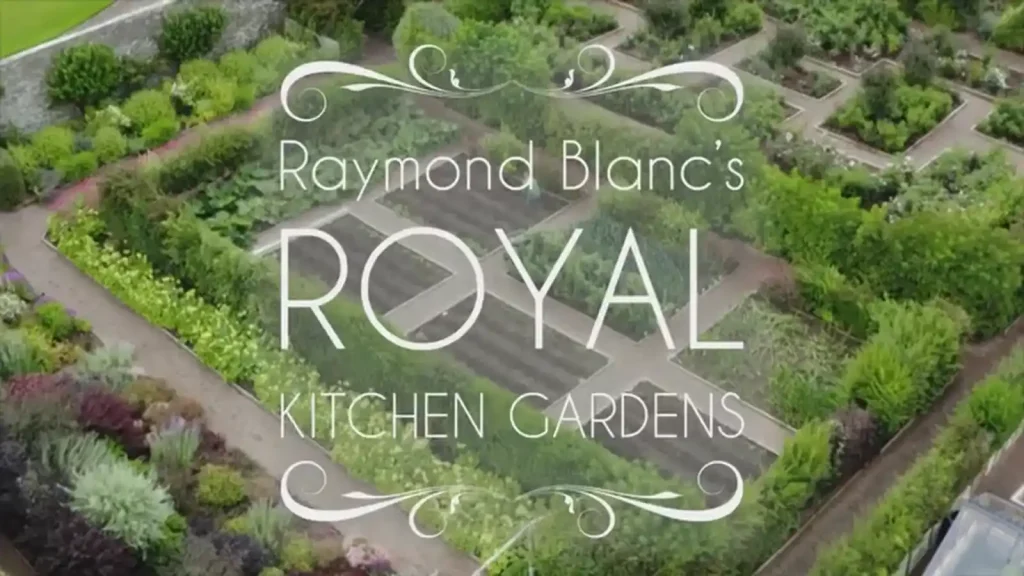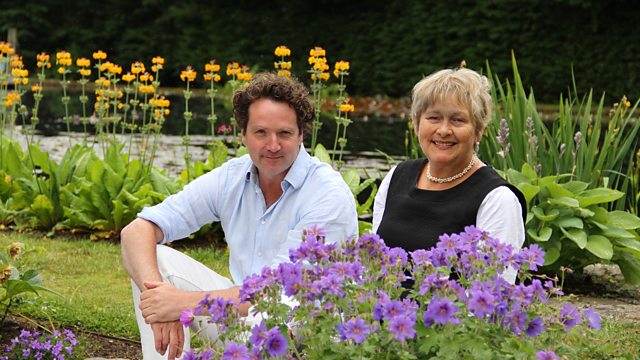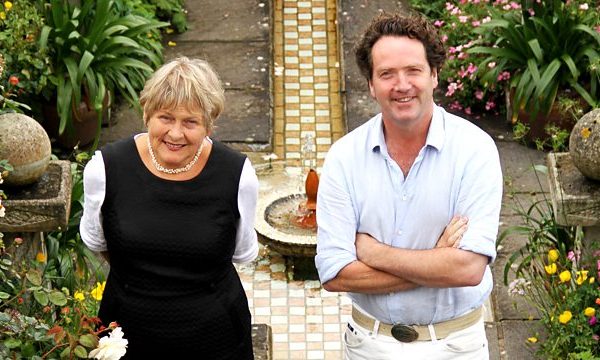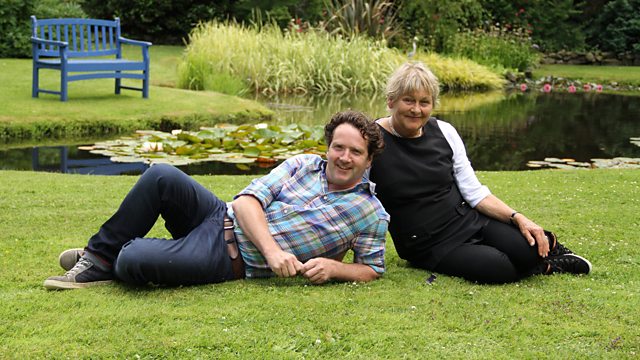Raymond Blanc’s Royal Kitchen Gardens episode 3: Nestled in the heart of Scotland, Dumfries House stands as a testament to the regal grandeur of Georgian architecture. This majestic mansion, with its elegant lines and historic charm, is more than just a beautiful edifice; it is a living piece of history that continues to enchant visitors from around the world. Among these visitors is the renowned and award-winning chef, Raymond Blanc, who recently embarked on a rare and insightful journey through this illustrious stately home.
In the third episode of Raymond Blanc’s Royal Kitchen Gardens, Blanc finds himself immersed in the breathtaking beauty and intricate details of Dumfries House. The mansion’s rococo opulence is evident in every corner, from its meticulously designed interiors to the expansive and stunning grounds that surround it. As Blanc walks through the grand halls and lush gardens, he is captivated by the timeless elegance that defines this historic estate.
One of the most intriguing aspects of Dumfries House is the influence of King Charles on its garden designs. His Royal Highness has long been known for his passion for sustainable and organic gardening, and his vision is clearly reflected in the verdant landscapes of Dumfries House. The gardens are a harmonious blend of traditional Georgian styles and modern ecological principles, creating a serene environment that is both beautiful and environmentally conscious.
Raymond Blanc’s visit to Dumfries House is not just a visual feast; it is also a culinary adventure. Inspired by the estate’s rich history and natural beauty, Blanc decides to create a dish that reflects the essence of Dumfries House. In a picturesque corner of the garden, with the mansion as his backdrop, he sets up his kitchen and begins to work on a delicious scallop, salmon, and vegetable ceviche.
Blanc’s approach to cooking is deeply influenced by his surroundings. As he prepares the fresh, locally sourced ingredients, he explains the importance of using sustainable and high-quality produce. The scallops and salmon are carefully sliced and combined with a medley of vibrant vegetables, creating a dish that is as visually appealing as it is flavorful. The ceviche is a perfect representation of the harmony between nature and cuisine, a theme that resonates deeply with the ethos of Dumfries House.
Throughout his visit, Blanc takes time to explore the various facets of Dumfries House. He delves into its rich history, learning about the notable figures who once called this mansion home and the architectural marvels that define its structure. He also engages with the gardeners and caretakers who maintain the estate, gaining insights into the meticulous care and dedication required to preserve such a historic landmark.
Raymond Blanc’s Royal Kitchen Gardens episode 3
The episode is a journey through time and taste, highlighting the unique connection between heritage and modernity. Blanc’s narrative is enriched by his personal reflections on the significance of preserving cultural landmarks and the role of sustainable practices in today’s world. His admiration for Dumfries House is palpable, and he conveys this through both his culinary creations and his interactions with the estate’s custodians.
Raymond Blanc’s Royal Kitchen Gardens episode 3 is more than just a cooking show; it is an homage to the enduring beauty and legacy of Dumfries House. Blanc’s visit offers viewers a rare glimpse into the splendor of one of Scotland’s most treasured mansions, while also emphasizing the importance of sustainability and heritage conservation. His culinary artistry, combined with the majestic backdrop of Dumfries House, creates an episode that is both educational and inspiring.
As the episode concludes, viewers are left with a profound appreciation for the intricate tapestry of history, culture, and nature that defines Dumfries House. Raymond Blanc’s exploration of this stately home is a reminder of the timeless allure of Georgian architecture and the enduring legacy of those who have worked to preserve it. Through his journey, Blanc not only showcases his culinary skills but also pays tribute to the beauty and significance of Dumfries House, ensuring that its story continues to captivate and inspire future generations.
The Royal Kitchen Gardens: A Culinary Journey with Raymond Blanc
Introducing Raymond Blanc’s Royal Adventure
Picture a world where culinary artistry meets horticultural splendor, where the bounty of the earth is nurtured by royal hands. This is the enchanting realm that renowned chef Raymond Blanc invites us to explore in his latest gastronomic odyssey. Like a master painter with his palette, Blanc skillfully blends his passion for exquisite cuisine with the rich tapestry of Britain’s royal kitchen gardens.
As we embark on this mouthwatering journey, we’ll witness Blanc’s eyes light up with childlike wonder. His infectious enthusiasm bubbles over as he discovers the hidden gems nestled within these regal grounds. From meticulously manicured herb gardens to sprawling orchards heavy with fruit, each step unveils a new treasure trove of flavors waiting to be unlocked.
The Significance of Royal Kitchen Gardens
Royal kitchen gardens are not mere patches of earth; they are living, breathing chronicles of culinary history. These verdant sanctuaries have long been the silent custodians of gastronomic traditions, nurturing the ingredients that have graced royal tables for centuries. Moreover, they stand as a testament to the enduring relationship between the monarchy and the land they steward.
In recent years, these gardens have taken on a new significance, championed by none other than King Charles III himself. With the passion of a true earth steward, His Majesty has breathed new life into these historic spaces. Under his guidance, these gardens have become beacons of sustainability, showcasing organic farming methods and biodiversity. It’s as if the king has waved a green wand, transforming these gardens into living laboratories of ecological harmony.
Dumfries House: A Georgian Gem
Our first stop on this regal culinary tour is the magnificent Dumfries House, a Georgian masterpiece nestled in the rolling hills of Ayrshire, Scotland. This architectural jewel, with its sweeping lawns and majestic façade, serves as the perfect backdrop for our gastronomic adventure. As we approach, it’s as if we’re stepping back in time, ready to uncover the secrets hidden within its hallowed walls and bountiful gardens.
Dumfries House is more than just a pretty face; it’s a living, breathing testament to King Charles III’s vision for a sustainable future. Through The Prince’s Foundation, His Majesty has breathed new life into this historic estate, transforming it into a hub of education and innovation. Here, the past and future dance in perfect harmony, with traditional gardening techniques rubbing shoulders with cutting-edge sustainable practices.
As Raymond Blanc steps onto the grounds, his culinary senses tingle with anticipation. What delectable discoveries await in the kitchen gardens of Dumfries House? What age-old techniques and modern innovations will he uncover? Join us as we follow in the footsteps of this culinary maestro, ready to feast our eyes – and soon our palates – on the royal bounty that awaits.
A Feast for the Senses: Exploring Dumfries House Gardens
The Queen Elizabeth II Walled Garden
Step through the gates of the Queen Elizabeth II Walled Garden, and you’ll find yourself in a horticultural wonderland. This four-acre gem is not just a garden; it’s a living, breathing canvas where nature and human creativity dance in perfect harmony. As you wander through its paths, you’ll feel as though you’ve stumbled upon a secret world, hidden away from the hustle and bustle of modern life.
At first glance, the garden might seem like a traditional kitchen plot, but look closer, and you’ll discover a revolutionary approach to gardening. Here, edible plants mingle freely with their ornamental cousins, creating a tapestry of colors, textures, and scents that delight the senses. Imagine vibrant rows of crisp lettuce nestled beside fragrant lavender, or towering sunflowers standing guard over plump, ripening tomatoes. It’s a feast for the eyes as much as it is for the palate.
Sustainable Farming and Education
Dumfries House isn’t just growing vegetables; it’s cultivating a new generation of eco-conscious gardeners and chefs. The estate’s commitment to organic and regenerative practices is more than just a trend – it’s a mission. As you explore the gardens, you might spot groups of eager students learning about composting, crop rotation, or the intricacies of companion planting.
These educational programs are the beating heart of Dumfries House. From wide-eyed schoolchildren to seasoned farmers looking to embrace sustainable methods, everyone is welcome to learn and grow here. The air buzzes with excitement as participants discover the magic of pulling a carrot from the earth or tasting a sun-warmed strawberry straight from the vine. It’s not just about growing food; it’s about nurturing a connection to the land and understanding the impact of our choices on the environment.
Culinary Delights from the Garden
As the sun begins to dip lower in the sky, casting a golden glow over the garden, Raymond Blanc’s eyes light up with inspiration. The bounty before him is a chef’s dream come true. With the precision of an artist selecting his palette, Raymond carefully chooses ingredients for his masterpiece: a Scallop, Salmon, and Vegetable Ceviche that will showcase the garden’s finest offerings.
Meanwhile, in the estate’s bustling kitchen, Chef Kevin Usher is putting his own spin on local ingredients. His Braised Pig Cheek Scotch Eggs are a celebration of Scottish tradition with a modern twist. As the aromas of simmering pork and fresh herbs waft through the air, it’s clear that these dishes are more than just food – they’re edible stories, telling tales of the land, the seasons, and the passionate people who tend to this remarkable garden.
From Garden to Table: Royal Culinary Traditions
Georgian Dining at Dumfries House
Step into the opulent dining room of Dumfries House, and you’re instantly transported to a bygone era of grandeur and excess. The air is thick with history, each gilded surface whispering tales of lavish feasts and spirited conversations. As your eyes adjust to the splendor, you can almost hear the clinking of crystal and the murmur of aristocratic voices from centuries past.
At the heart of this magnificent space stands a table that has witnessed countless royal banquets. Its polished surface reflects the flickering candlelight, creating an atmosphere of intimacy despite the room’s grand proportions. Above, a chandelier dripping with crystals casts a warm glow, illuminating the exquisite Chippendale furniture that lines the walls. This isn’t just a dining room; it’s a stage where the drama of 18th-century Scottish aristocratic life unfolded nightly.
Raymond’s Royal-Inspired Recipe
Inspired by the rich culinary heritage of Dumfries House, Raymond Blanc has crafted a dish that bridges the gap between past and present: Potato and Turnip Dauphinoise. This creation is a masterful blend of French technique and Scottish ingredients, much like the fusion of cultures that define the estate itself. As Raymond slices the potatoes and turnips with practiced precision, you can see the wheels turning in his creative mind.
The magic begins as he layers the thinly sliced vegetables in a dish, each layer a canvas for the rich, creamy sauce he’s prepared. The aroma of garlic and thyme fills the air, mingling with the earthy scent of the root vegetables. As he slides the dish into the oven, Raymond’s eyes twinkle with anticipation. This isn’t just cooking; it’s alchemy, transforming humble ingredients into a dish fit for royalty.
The Legacy of Royal Kitchen Gardens
The influence of King Charles III on sustainable gardening practices is evident in every corner of Dumfries House. His passion for organic farming and biodiversity has transformed these grounds into a living laboratory of ecological innovation. As you stroll through the kitchen gardens, you can’t help but feel a sense of hope for the future of agriculture.
But the true magic of these royal kitchen gardens lies in their ability to bridge generations. Here, ancient horticultural wisdom meets cutting-edge sustainability practices. Young apprentices work alongside seasoned gardeners, absorbing knowledge that has been passed down through centuries. It’s a beautiful dance of tradition and innovation, ensuring that the legacy of these royal gardens will continue to flourish for generations to come. In this green haven, the seeds of knowledge are planted daily, nurturing not just plants, but a whole new generation of environmental stewards.
Conclusion: A Royal Feast for the Future – Raymond Blanc’s Royal Kitchen Gardens episode 3
The Enduring Appeal of Kitchen Gardens
In a world of fast food and convenience, kitchen gardens stand as timeless bastions of culinary authenticity. These verdant spaces, once the exclusive domain of royalty, now capture the imagination of food lovers and gardening enthusiasts alike. Their allure lies not just in the fresh produce they yield, but in the connection they foster between people and the earth.
As we’ve seen at Dumfries House, kitchen gardens are far more than mere plots of land. They’re living classrooms, experimental labs, and guardians of biodiversity all rolled into one. The sight of neat rows of vegetables, the scent of herbs on the breeze, and the buzz of bees pollinating flowers – all these elements combine to create a sensory experience that nourishes the soul as much as the body. In an age of digital detox and mindfulness, these gardens offer a tangible way to reconnect with nature and our food sources.
Inspiring a New Generation
The royal kitchen gardens are sowing seeds of change, inspiring a new generation to embrace sustainable living. By opening their gates to the public and hosting educational programs, these once-exclusive spaces are democratizing knowledge about organic farming and eco-friendly practices. It’s as if the wisdom of centuries is being distilled and shared, drop by precious drop.
From school children getting their hands dirty for the first time to seasoned chefs seeking inspiration, the impact of these gardens ripples far beyond their stone walls. They’re sparking conversations about food security, biodiversity, and the importance of local produce. As visitors leave with soil under their nails and fresh ideas in their minds, they carry with them the potential to transform their own communities. It’s a green revolution, quietly taking root in backyards and community plots across the nation.
Raymond Blanc’s Final Thoughts
As Raymond Blanc’s journey through the royal kitchen gardens comes to a close, his eyes sparkle with renewed passion. These visits have been more than just a culinary adventure; they’ve been a profound reminder of the power of good food and sustainable practices. For Blanc, every vegetable pulled from the earth, every fruit plucked from a tree, tells a story of tradition, innovation, and hope for the future.
Reflecting on his experiences, Blanc sees these gardens as a blueprint for a more sustainable and delicious future. He envisions a world where every community has access to fresh, locally grown produce, where the art of cooking is intimately tied to the rhythms of nature. As he packs his chef’s knives, ready to return to his own kitchen, Blanc carries with him not just new recipes, but a renewed commitment to championing sustainable gastronomy. The legacy of these royal kitchen gardens, he believes, has the power to transform not just our plates, but our planet.
F.A.Q. Raymond Blanc’s Royal Kitchen Gardens episode 3
Q.: What inspired Raymond Blanc to visit Dumfries House in episode 3 of his Royal Kitchen Gardens series?
A.: Raymond Blanc was drawn to Dumfries House due to its stunning Georgian architecture and its historically rich and well-maintained estate. The house’s integration of traditional Georgian styles with modern sustainable gardening practices, influenced by King Charles, particularly resonated with Blanc’s philosophy of blending heritage with modern culinary practices.
Q.: How does King Charles’s passion for gardening manifest at Dumfries House?
A.: King Charles’s influence at Dumfries House is evident in its gardens, which reflect his commitment to sustainable and organic gardening. The gardens are designed to combine aesthetic beauty with environmental consciousness, showcasing a blend of traditional landscaping and modern ecological principles.
Q.: What dish did Raymond Blanc prepare in the gardens of Dumfries House, and what was its significance?
A.: In the picturesque setting of Dumfries House’s gardens, Raymond Blanc prepared a scallop, salmon, and vegetable ceviche. This dish not only highlighted the fresh, locally sourced ingredients but also symbolized the harmony between nature and cuisine, underscoring the importance of sustainable produce in culinary art.
Q.: What role do the gardens at Dumfries House play beyond their visual appeal?
A.: Beyond their visual appeal, the gardens at Dumfries House serve as a platform for education and sustainability. They are used to teach and promote sustainable agricultural practices, hosting workshops and training for gardeners and visitors alike. This educational aspect helps cultivate an understanding of ecological gardening practices among community members.
Q.: How does Raymond Blanc’s visit to Dumfries House contribute to the preservation of cultural landmarks?
A.: Raymond Blanc’s visit to Dumfries House plays a significant role in promoting cultural preservation through public engagement. By showcasing the estate’s architectural and horticultural splendors alongside its sustainable practices, the episode educates and inspires viewers about the importance of preserving such historic landmarks while adapting them to modern needs.




